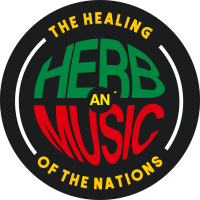20 Aug Tuning Up Your ECS

“One good thing about music, when it hits you, you feel no pain.”
BOB MARLEY
Tuning Up Your ECS
words: Alicia Faris
Certified Holistic Nutritionist – Path to Panacea
www.pathtopanacea.com
Imagine your body as an orchestra. When performing optimally, everything is in balance, making beautiful music. You can think of your endocannabinoid system (ECS) as it’s conductor, functioning in and across all physiological processes and organs, acting and reacting to internal and external stimuli to direct, correct, and manage your health in perfect harmony. It’s one of the most evolutionarily preserved biological systems known, a 600 million year old messenger and receptor system integral to homeostasis. It’s possible you’re familiar with this supreme system, but find yourself out of sync with the myriad ways of which to nourish it for exceptional performance. You’re not alone, as we’ve only just begun to scratch the surface of its vital role in the human body.
Scientists have a long history of gaining insight into human physiology by studying the way in which plants interact with our bodies. By isolating and mapping the chemical structure of bioactive compounds (such as THC and CBD) in the Cannabis Sativa plant, researchers discovered this intricate network of connectors, an important biological system known as the endocannabinoid system. It is the largest group of neurotransmitters found in the human body, and its receptors are found on almost every one of your body’s organs. Many researchers believe the ECS is the link between the gut and brain that enables them to communicate and synchronize (1). Gut feeling, anyone?
The endocannabinoid system is an essential biological system in the body that is involved in regulating and balancing a variety of physiological and cognitive processes such as mood, emotion, motivation, memory, pleasure perception, digestion, appetite, metabolism, immune function and much more. When an imbalance is detected within our internal environment, the body synthesizes endocannabinoids that interact with the cannabinoid receptors. Since the endocannabinoid system drives homeostasis, nourishing its functions is essential for maintaining health of mind and body. Here, we will explore the ECS as well as examine some of the dietary and lifestyle approaches which may improve endocannabinoid system function.
What exactly is the endocannabinoid system?
The ECS is made up of three main components:
- A widespread network of cannabinoid receptors throughout the body including cannabinoid receptor type 1 and type 2 (CB1 and CB2). CB1 receptors are found more prominently in the central nervous system, while CB2 receptors are more often found in the peripheral nervous system, the gastrointestinal tract, and on immune cells.
- Endogenous cannabinoids or endocannabinoids (eCBs) naturally produced by our body such as anandamide (AEA) and 2-arachidonoylglycerol (2-AG). When these endocannabinoids bind to their corresponding receptors, they transmit a signal that helps to regulate a physiological function, such as sleep, inflammation, or even neuron communication. They are the chemical messengers regulating almost every system of the body.
- Regulatory metabolic enzymes including fatty acid amide hydrolase (FAAH) and monoacylglycerol lipase (MAGL)(2). After sending their signals through the cannabinoid receptors, the ECS uses these metabolic enzymes to break down the molecules until the next time they’re needed.
So where does cannabis come in?
While we make our own endocannabinoids, the suite of cannabinoids that are found in the cannabis plant are considered exogenous cannabinoids (found outside the body) and they fit into or have an influence upon the same receptors in our bodies. While THC binds directly to the receptor sites, essentially mimicking the body’s own neurotransmitters, CBD delays the reuptake and breaking down of endogenous cannabinoids, thus increasing the concentration of these neurotransmitters in your system. These two cannabinoids work with your ECS to ease chronic pain, help you sleep, or ignite bliss. Though, cannabis is not the only plant that contains phytocannabinoids. There are thousands of healthy plant chemicals that interact with this system such as alkamides, cannabidiol, terpenoids, and cannabimimetics.
The physiological benefits of these cannabinoids in the body are diverse, and there is still much to be learned. As we continue to sort through the emerging science of cannabis and cannabinoids, one thing remains clear: a functional cannabinoid system is essential for health.
How can you support your endocannabinoid system?
There is no single panacea, rather complementary measures that must be taken simultaneously for meaningful progress to be made. Phytocannabinoids may be one part of a healthy lifestyle that includes a clean, nutrient-rich diet, exercise, stress-reduction, and additional measures to promote relaxation and lift your spirits.
Nutrition
The foundational strategy for nutritionally supporting the ECS (and the body in general) should always be to first provide the raw materials it needs to make its own medicine. A diet consisting of clean, colorful macronutrients (protein, carbohydrates, and fat) delivers a spectrum of micronutrients (vitamins and minerals) that can supply the body with the tools it needs for optimal function. Choose organic food when possible, as pesticides are known to disrupt the endocannabinoid system.
Essential Fatty Acids
Consuming more healthy fats is vital for the health of your ECS. The building blocks of endocannabinoids are polyunsaturated fatty acids (PUFAs). We need a consistent supply since the body does not store endocannabinoids for a rainy day. They are made on site, and on demand. A healthy balance of Omega-3 and grain-derived Omega-6 essential fatty acids from foods such as cold-water fish (salmon, anchovy, herring, sardines), hemp hearts, flax seeds, eggs, nuts, and pasture raised poultry is fundamental for maintaining health.
Phytocannabinoid Containing Foods
Cacao-
Dark chocolate has compounds similar to endocannabinoids on a molecular level. The compounds found in cacao can lead to increased levels of endocannabinoids by inhibiting their metabolic breakdowns. Chocolate is rich in antioxidants which reduce cortisol and oxidative stress. Plus, dark chocolate contains the endocannabinoid anandamide (also known as the Bliss Molecule).
Fruits and Vegetables-
Fruits such as berries, apples, mangoes, citrus fruits, grapes, plums and peaches as well as vegetables like carrots, asparagus, squash, and cucumbers have all been studied and found to contain cannabinoids. Cruciferous vegetables like cauliflower, broccoli, and cabbage contain a compound called indole-3-carbinol that is transformed in your gut into diindolylmethane, which acts positively on the CB2 receptors. Leafy greens contain the terpene beta-caryophyllene and activate the CB2 endocannabinoid receptor, which may be important for quelling excess inflammation.
Herbs and Spices-
Camellia Sinensis and certain herbs such as turmeric, echinacea, and tulsi have beneficial properties that can raise endocannabinoid levels, stimulate CB2 receptors, and help to restrict endocannabinoids from breaking down. Echinacea also contains CB2 binding capacity to help fight infections and inflammation. Black pepper, clove, cinnamon, oregano, rosemary and cannabis all have beta-caryophyllene, a terpene that stimulates the CB2 receptors that are present throughout our body, immune and inflammatory systems.
Cannabis
Using a whole plant cannabis extract is a tried and true method of nourishing and supporting the endocannabinoid system. It can be thought of as a homeostatic regulator. THC is an activator of the ECS, causing a spike in the manufacturing of anti-stress compounds that, in small amounts, help you deal with a stressful situation. CBD is a regulator of the ECS, helping to re-evaluate and re-define what it sees as a baseline amount of stress and encouraging the body to balance the levels of these compounds.
Exercise
As it turns out, the euphoric rush or “runners high” originally speculated to be caused by endorphins is actually due to an increase in the production of the endocannabinoid anandamide (3). Anandamide (named for the Sanskrit word for bliss) is a fatty acid-type neurotransmitter that attaches to cannabinoid receptors and incites feelings of delight or happiness. Now that’s something to workout for.
Stress Reduction
Epigenetic inputs such as poor diet, lack of sleep, exercise, poor sleep, drug abuse, racism, and poverty are paramount, and in some ways more consequential in terms of fostering chronic stress. Chronic stress, a significant risk factor for many maladies, depletes endocannabinoid tone, leading to inflammation, hypertension, elevated cortisol levels, hormone imbalances, heightened blood sugar, cognitive impairment, and increased susceptibility to illness. Building your own personal tool-kit for stress reduction is crucial for personal health. Try meditation, practicing yoga or taking a long walk. Our ability to deal with stress and respond to positive stimuli is directly correlated to the state of our ECS which is highly individual. This offers an explanation to why the same strains or concentrations of cannabinoids can have a very different effect from one person to the next.
Music
Bob Marley had it right, “One good thing about music, when it hits you, you feel no pain.” In the case of the ECS, recent evidence suggests an important role in signaling of rewarding events (4). For decades, endogenous dopaminergic and opioid systems had been considered the most important systems in mediating brain reward processes. It turns out, music and singing has been shown to increase plasma levels of anandamide and improve positive mood and emotions through the ECS (5). Turns out tuning into your bliss may have even more benefits than you realize.
